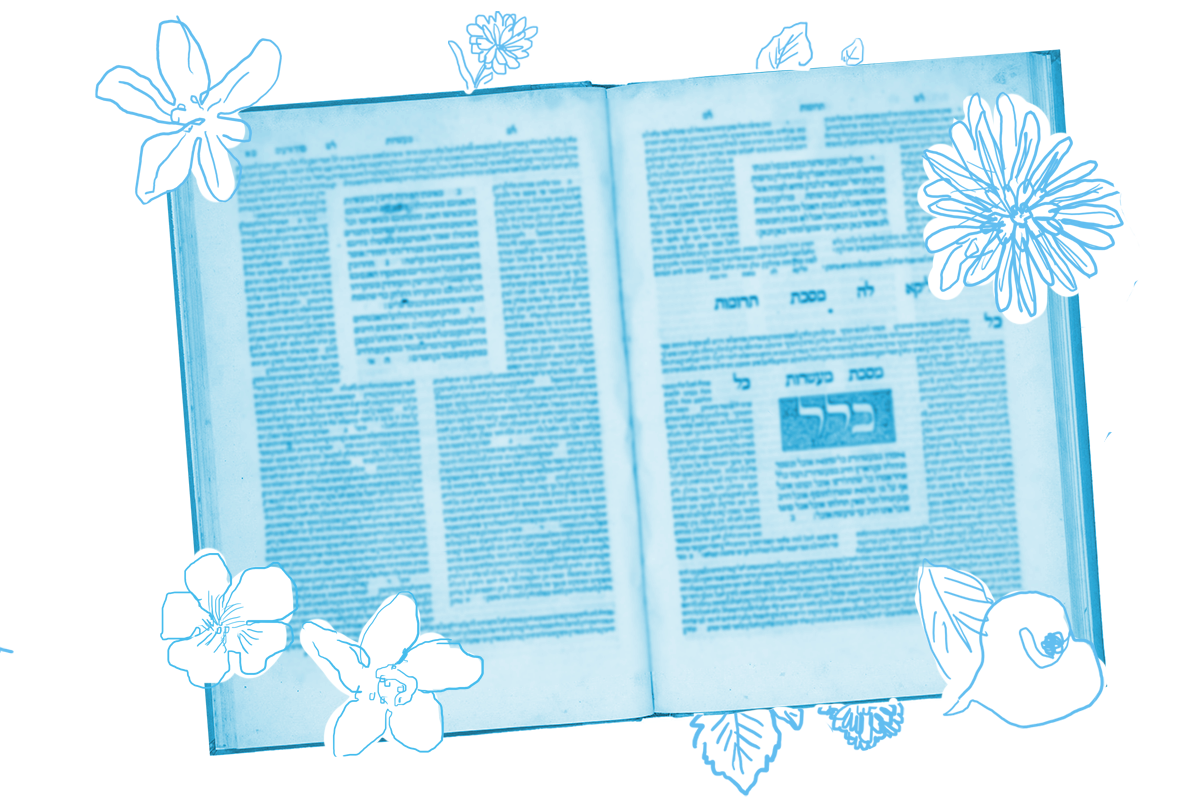On today’s daf, Abaye describes the daily Temple service as originally recounted by Abba Shaul. Abba Shaul was a Tanna, an early rabbi, who is cited throughout the Talmud because of his knowledge of the Temple and its operations. He may have lived early enough that he witnessed the Temple workings himself. (Incidentally, he was also a grave digger who reminded his colleagues frequently of the important mitzvah of burying the dead and was known for his impressive height.)
Abba Shaul’s descriptions of Temple procedures are often given without justification — they are his memories or opinions. Today is no different. Abaye recounts the order of the daily Temple service in Abba Shaul’s name and it includes: arranging various piles of wood on the altars, removing old ashes from the altar and from the menorah, offering the morning and afternoon sacrifices, the meal offering, the griddle-cake offerings, the libation and the frankincense (if it’s Shabbat).
For most of today’s daf, the rabbis of the Gemara seek proofs for Abba Shaul’s prescribed order for these procedures. They ask: How do we know that the large pile of wood for the sacrificial limbs was placed on the altar before the smaller pile for frankincense? How do we know that the placement of two logs on the large pile of wood on the altar precedes the removal of ashes from the inner altar?
Let’s dip into one of those conversations, starting with Abaye’s original statement:
With your help, My Jewish Learning can provide endless opportunities for learning, connection and discovery.
Abaye continued: And removal of ashes from the inner altar precedes the removal of ashes from five of the seven lamps of the menorah.
Gemara: What is the reason for this?
Abaye: I learned this through tradition; however, I do not know the rationale behind it.
In this case, Abaye admits that although he was taught this rule, he never learned the justification. Luckily, his colleague and interlocutor Rava has an answer (which he learned from another teacher):
Rava said: The reason is in accordance with the statement of Reish Lakish, as Reish Lakish said: One may not forego performance of any of the mitzvot in order to perform another mitzvah. When he enters the sanctuary it is the altar that he encounters first.
Rava explains that the ashes are cleared from the altar first and the menorah second because of simple geography: When one enters the sanctuary, one encounters the altar first.
While some of Abaye’s teachings today are justified from scripture, Rava’s justification relies on a principle: One does not skip an opportunity to perform a mitzvah in order to perform another mitzvah. All mitzvot are significant and beautiful and we do not wish to give the impression that some are less important.
Rava then supplies us with another example of this principle. When donning tefillin, one must put them on the arm before the head because one “encounters” the arm first. (Admittedly, I find this a little more difficult to picture, but I suppose one could make an argument that if one is holding tefillin in one hand, it is more natural to place them on the other hand than it is to place them on the forehead.)
Maimonides, the great medieval halakhist, supplies this addendum to the rule about tefillin: One should store the arm tefillin on top of the head tefillin, so that one does not have to move aside the head tefillin in order to access the arm tefillin first. (If your tefillin are stored incorrectly, and you accidentally grab the head tefillin first, most authorities think you should still set down your head tefillin and secure your arm tefillin first, though this is obviously not ideal because of the principle of not bypassing a mitzvah.) In a move that seems to anticipate the early 21st-century mania for organization, the rabbis call on us to glide smoothly from mitzvah to mitzvah, and also to thoughtfully arrange our objects so that we can do just that.
Read all of Yoma 33 on Sefaria.
This piece originally appeared in a My Jewish Learning Daf Yomi email newsletter sent on May 14th, 2021. If you are interested in receiving the newsletter, sign up here.



